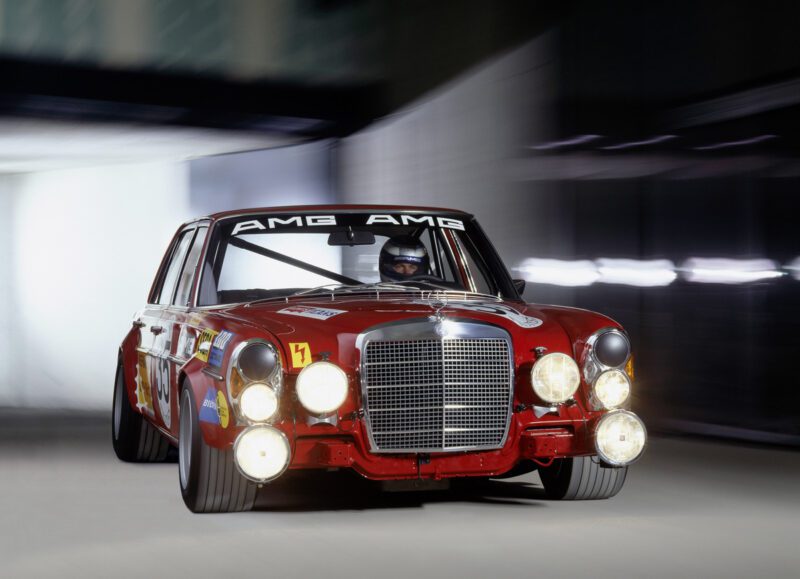It all started in a basement.
In the 1960s, engineers Hans Werner Aufrecht and Erhard Melcher received some terrible news. Daimler-Benz had decided to end all motorsport activities — tough luck for a duo working in the engine development department, where they’d been wrenching on a new racing engine for the 300 SE. Rather than kill the project, the engineers took the power plant to Aufrecht’s basement in Großaspach, Germany, and continued development after hours.
In 1965, the engine was ready to go racing. With racing driver Manfred Schiek behind the wheel, they entered that year’s German Touring Car Championship. And the engine didn’t just race — it won 10 times, proving to Aufrecht and Melcher that they were onto something big. Aufrecht decided he was ready to branch out and enlisted Melcher to continue their racing pursuits as an independent brand. In 1967, AMG was born.
AMG, which stands for Aufrecht, Melcher, and Großaspach, charged out of the gates with an ambitious first project. The engineers purchased a used Mercedes-Benz 300 SEL 6.3 and began to prepare it for entry in one of the toughest races of the time, the 24 Hours of Spa. The crown jewel was the car’s engine, punched out to 6.8 liters and delivering 428 horsepower. In 1971, sans the support of Mercedes-Benz, their team of 12 took to the track with the very first AMG. Onlookers mocked it, and rightfully so. The 300 SEL was a big, heavy luxury sedan, not a purebred racer. They dubbed it “Red Pig.”
The Red Pig didn’t take long to transform mockery into amazement. Despite starting fourth on the grid, the land yacht turned speedboat led the race by the end of the first lap. It dominated all of its competitors, winning first in class and second overall. According to Aufrecht, they would’ve won overall if the regulators hadn’t limited its fuel tank to a measly 120 liters. Nonetheless, AMG had left a mark, and throughout the 1970s, business exploded. So much so that the tuning firm relocated to Affalterbach, where it lives today.
Fast-forward to 1986 — AMG unveiled its most significant road car, dubbed the AMG Hammer on account of the 5.0-liter V8 that lived under its hood. This engine was unique because it featured new four-valve-per-cylinder technology, which had been developed by Melcher two years prior. It was the first time anyone had used this configuration in a Mercedes-Benz, and it boosted power tremendously.
By 1993, Mercedes-Benz wanted a piece of the performance pie. The carmaker signed a contract with the tuning firm, allowing Mercedes-Benz to sell AMG- branded vehicles through its vast dealership network. The first was the Mercedes-Benz AMG C 36, released that year and marking the start of a fruitful partnership. Within four years, Mercedes-Benz commissioned AMG to build the marque’s first race car — from scratch; 128 days after AMG completed its initial sketch, the Mercedes- Benz CLK GTR entered to race in the FIA GT Championship series.
At the turn of the century, Mercedes-Benz acquired a controlling stake in AMG, renaming it Mercedes-AMG GmbH. Following this move, Mercedes-AMG furthered its development of significant components for road vehicles. This included bespoke engines, transmissions, and entire cars from the ground up. In 2005, Aufrecht, then 67, sold his remaining shares, giving Mercedes-Benz complete control over its performance subdivision.
Throughout the 2010s, Mercedes-AMG ramped up its engineering might while producing more in-house vehicles than ever before, starting with the SLS AMG. The performance carmaker now manufactures three in-house vehicles: the AMG GT, SL Roadster, and GT 4-Door Coupé. The company’s most ambitious project yet — the Mercedes-AMG One — is currently underway.
This article appeared in our August 2022 issue.
